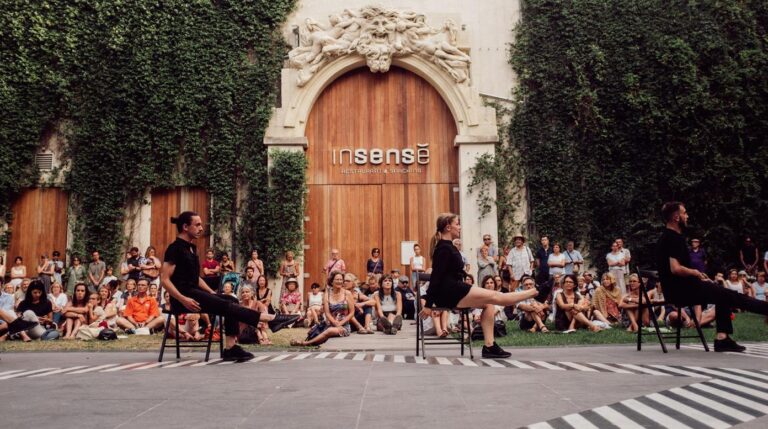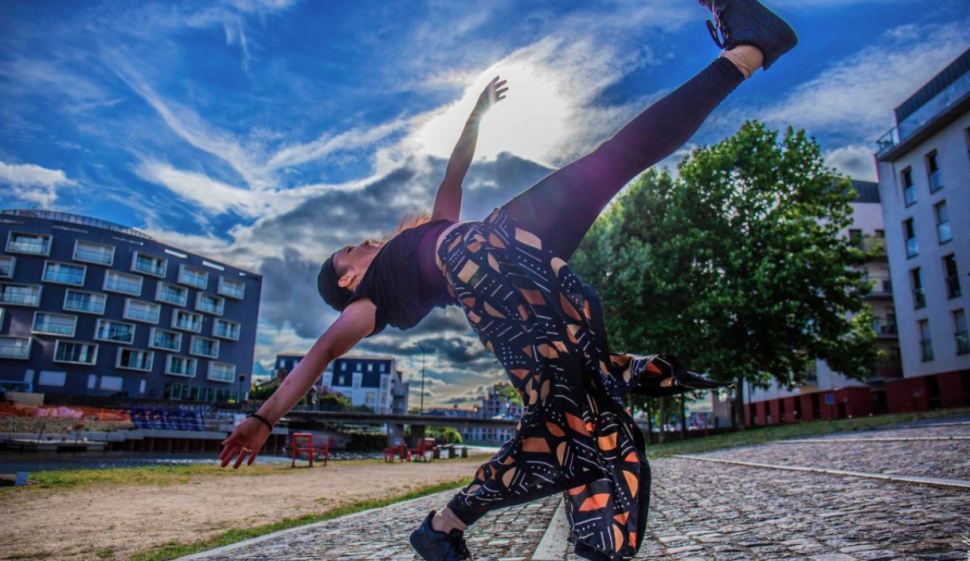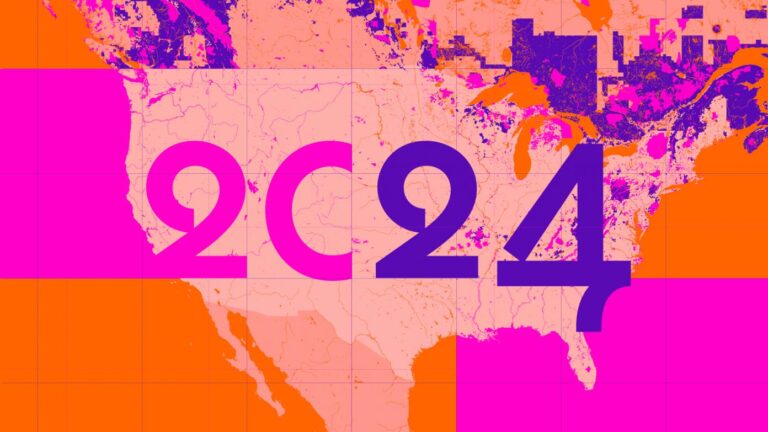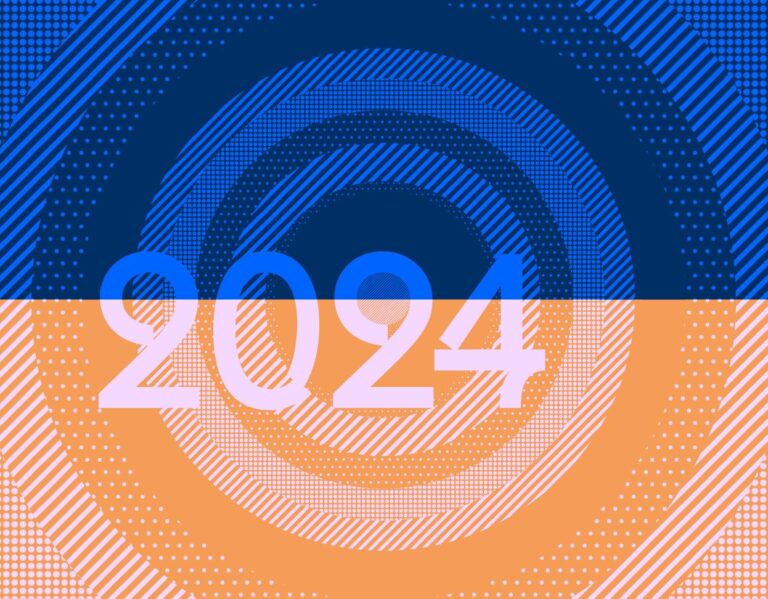
Portrait: Marie Houdin
Performing Arts

LAM NGUYEN
French choreographer and dancer Marie Houdin, member of Engrenage[s], will present her project New Orleans Fever: A Bridge of Dance between Continents in October 2021 in France. Initially supported by the Institut français and the Région Bretagne for a first phase of development in New Orleans, the artistic exchange New Orleans Fever is now supported by the Cultural Services of the French Embassy in partnership with FACE Foundation, through the 2020 FUSED program, for a second phase in France.
Giving birth to “The Unexpected Dance” as a dialogue between continents
In 2014, Marie Houdin flew to New Orleans. While there, she discovered the “Second Lines” cultures and was captivated by the lively mix of funk and hip-hop cultures. Around her, Baby Dolls, Black Indians, and the Skull and Bone gang gather together to dance and speak with their bodies about their common history. Her experiences on that trip were a turning point for Marie Houdin, representing a starting point for her artistic approach under the symbolic name The Unexpected Dance.
“Creolisation rules over the unpredictable compared to race mix; it creates in all Americas, absolutely unexpected cultural and linguistic microclimates, places where repercussions of languages on one another or of cultures on one another are abrupt.” said Édouard Glissant. The title The Unexpected Dance is inspired by the writings of Édouard Glissant, who defined the concept of “creolisation.”
Marie Houdin first created Bal du “Tout-Monde” in 2017 as a participatory performance, inviting artists and the audience to share all kinds of dances from those passed on by the great African kingdoms to present generations to the Taino Islands in the Caribbean. She then moved on to Unexpected in 2019. The solo performance embodies the dialogue between a musician and a dancer while examining and presenting the social function of dance. The third stage of the project The Unexpected Dance is particularly dense, as it involves research trips and choreographic exchanges. Between Nov. 2018 and April 2019, Marie Houdin traveled to Cuba, Senegal, and again to New Orleans to observe social and traditional dances in the region. In doing so, she aimed to examine and uplift an artistic dialogue between continents, and to work for the decolonization of spirits and bodies.
“The Tout-Monde therefore points out the new presence of both human beings and things, a state of globalness where Relation rules,” Édouard Glissant said.
Collective memories and universal dances
In an interview with the Institut Français, Marie Houdin explained why she chose these three destinations for her research work and her experience in the on-site collection process:
“I based my choices on the map of transatlantic trafficking and French colonial history while taking an interest in dances that have both a social and a ritual dimension to them, dances that convey a history and are still very popular today, and which are continuing to evolve. This quest led me to the Senegalese sabar, the Cuban rumba, and, finally, second-line Buckjumping and the dances of the New Orleans ‘Mardi Gras Indian’ culture. These dances are alive and unpredictable. And they are not danced anywhere in the world the same way they are in their homelands,” she said.
“I was able to film local, community, and traditional events, some spontaneous, others the result of extensive planning, which allowed me to meet with dancers and interview them. I try to follow a protocol that I have created through my choreographic research, based on the fundamental elements that link these dances together while also setting them apart. The interviews take place in two stages: a question and answer session and a danced interview. I invited some of these dancers back afterward, to do what I called ‘danced dialogues,’ with three dancers. Most of them invited me to follow them at their shows, in their dance classes, and with their families. So I was able to film some of them on completing a whole journey. Finally, whenever possible, there was a whole range of spontaneous data collection, depending on the culture of each country,” she said.
Marie Houdin plans new projects in line with her choreographic approach—around the notions of resilience, identity, and memory. Among them, the French-New Orleans artistic exchange, New Orleans Fever, which she is showing through performances in New Orleans, Orleans, France, Lille, France, and Rennes, France. In doing so Marie Houdin aims to question the place of dance in the public space, to work with local artists, and to reflect on decolonization through identity and resistance. Indeed, New Orleanian artists participating in this project—Rodrick “Scubble” Davis, Terrylyn Dorsey, and Jessica Donley—specialize in different types of dance including footwork, swing, and bounce, but they also share a common genre: Buckjumping. Buckjumping is a dance and a form of resistance against oppression, slavery, and segregation. Learning from these local artists is fundamental for Marie Houdin who does not aim to reproduce these culturally personal gestures, but instead attempts to understand the social dimensions of these community dances. New Orleans Fever is a research and sharing project that reminds us of how dance is a means of expression and identity.
About Marie Houdin
Marie Houdin has been a dancer and choreographer at Compagnie Engrenage[s] since 2004. She specialized in funk style (locking, electric boogaloo, waacking, and foot working) alongside Greg Campbellock Jrs. and the Electric Boogaloos members, among others. Up until 2010, she co-choreographed shows, a dance lecture, and the Funk Ball I Feel Good. That same year, she created the performance Roots and since 2012, she has co-directed the festival Le Funk prend les Rennes, in Rennes, France. Marie Houdin is passionate about the meaning of creolized dances—she continued to learn various dance methods including and off of the Acogny technique developed by Germaine Acogny of École des Sables in Dakar, Senegal), and Dunham technique from Katherine Dunham, who runs a arts center in St. Louis.. In 2014, she created Red Line Crossers and co-produced the festival Tombées de la Nuit. In 2015 she created Soul Train Géant before turning to her personal project The Unexpected Dance.
About Engrenage[s]
The Compagnie Engrenage[s] was founded in 2003 by Franck Guizonne and Céline Mousseau. Dedicated to hip-hop and funk dances, the Compagnie produced 17 shows with more than 600 performances between 2003 and 2016. The Compagnie Engrenage[s] has been a generator of artistic projects since 2017, supporting artists influenced by urban cultures and encouraging innovative artistic research projects.
Here is a video of the French dancers taking part in the New Orleans Fever project. The artists featured are Virginie Savary, Houth Chonbura “BBoy Cambo,” and Marie Houdin.


